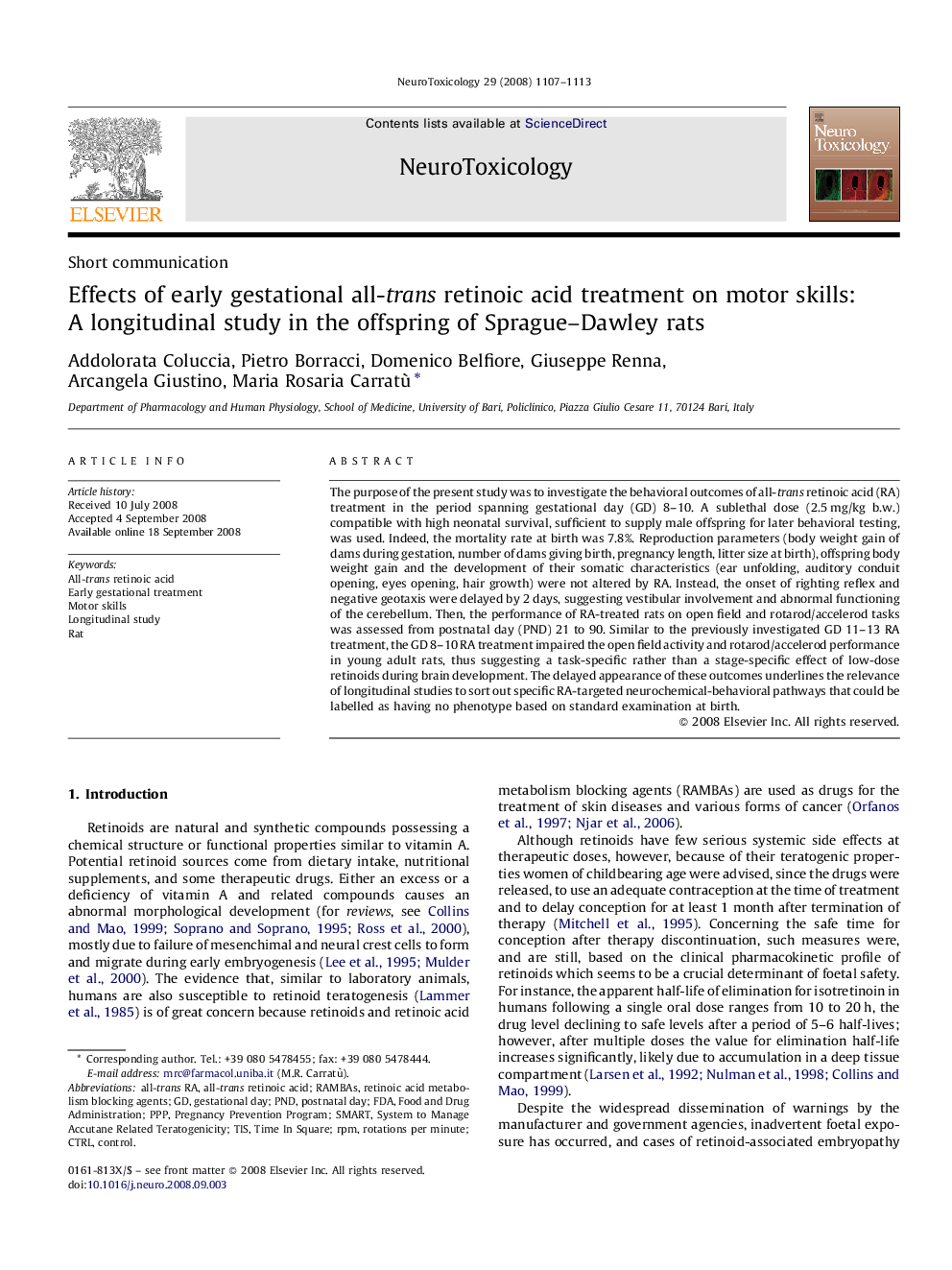| Article ID | Journal | Published Year | Pages | File Type |
|---|---|---|---|---|
| 2590063 | NeuroToxicology | 2008 | 7 Pages |
The purpose of the present study was to investigate the behavioral outcomes of all-trans retinoic acid (RA) treatment in the period spanning gestational day (GD) 8–10. A sublethal dose (2.5 mg/kg b.w.) compatible with high neonatal survival, sufficient to supply male offspring for later behavioral testing, was used. Indeed, the mortality rate at birth was 7.8%. Reproduction parameters (body weight gain of dams during gestation, number of dams giving birth, pregnancy length, litter size at birth), offspring body weight gain and the development of their somatic characteristics (ear unfolding, auditory conduit opening, eyes opening, hair growth) were not altered by RA. Instead, the onset of righting reflex and negative geotaxis were delayed by 2 days, suggesting vestibular involvement and abnormal functioning of the cerebellum. Then, the performance of RA-treated rats on open field and rotarod/accelerod tasks was assessed from postnatal day (PND) 21 to 90. Similar to the previously investigated GD 11–13 RA treatment, the GD 8–10 RA treatment impaired the open field activity and rotarod/accelerod performance in young adult rats, thus suggesting a task-specific rather than a stage-specific effect of low-dose retinoids during brain development. The delayed appearance of these outcomes underlines the relevance of longitudinal studies to sort out specific RA-targeted neurochemical-behavioral pathways that could be labelled as having no phenotype based on standard examination at birth.
